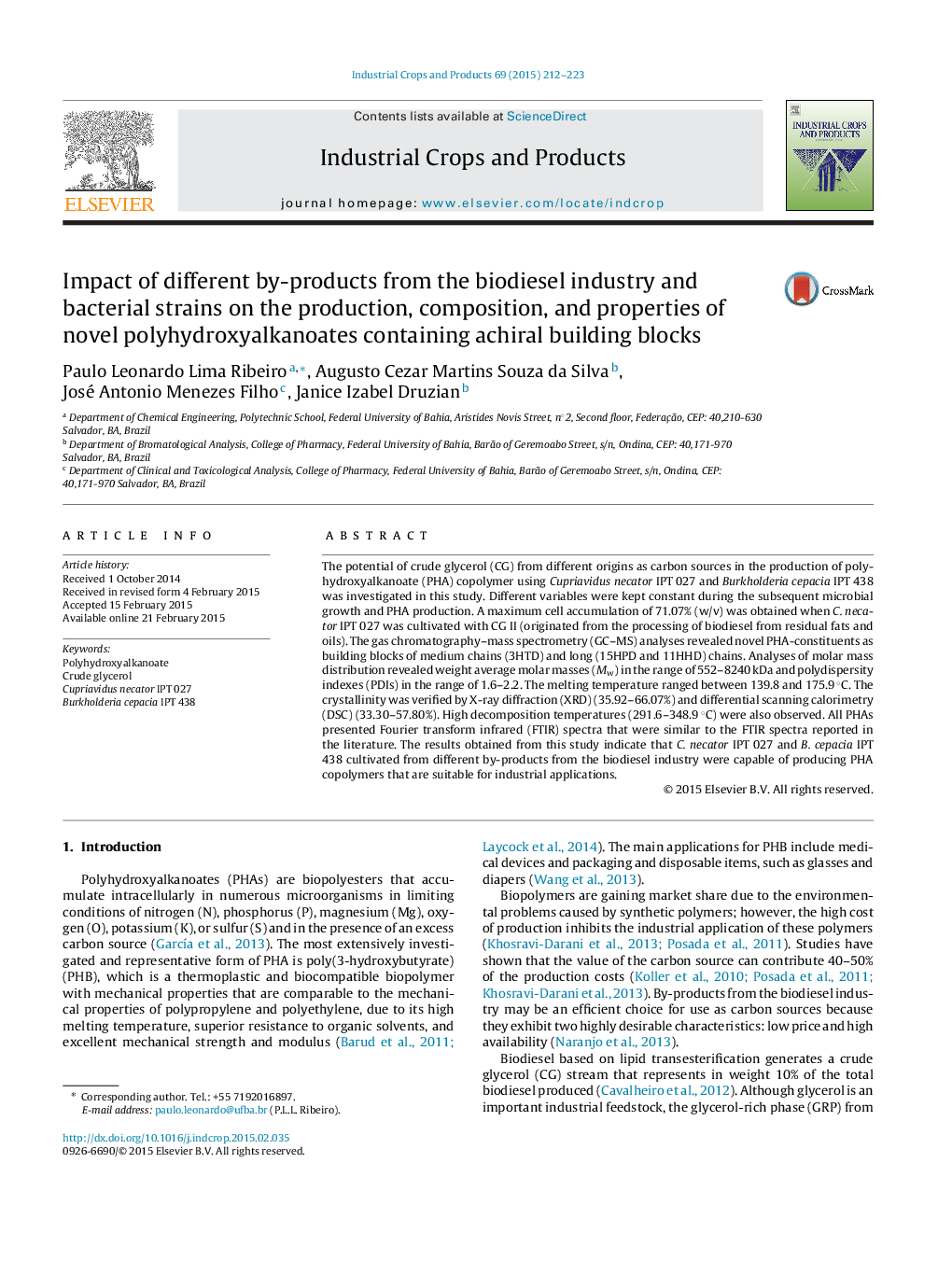| کد مقاله | کد نشریه | سال انتشار | مقاله انگلیسی | نسخه تمام متن |
|---|---|---|---|---|
| 4512996 | 1624840 | 2015 | 12 صفحه PDF | دانلود رایگان |
• Novel PHA-constituents were produced by Cupriavidus necator IPT 027 and Burkholderia cepacia IPT 438 from crude glycerol of different origins.
• GC–MS analyzes revealed PHA copolymers with building blocks of medium and long chains, with high molar masses and low degrees of crystallinity.
• The versatility of strain Burkholderia cepacia IPT 438 was observed with regard to the properties of biopolymers.
• The biopolymers produced are suitable for industrial applications.
The potential of crude glycerol (CG) from different origins as carbon sources in the production of polyhydroxyalkanoate (PHA) copolymer using Cupriavidus necator IPT 027 and Burkholderia cepacia IPT 438 was investigated in this study. Different variables were kept constant during the subsequent microbial growth and PHA production. A maximum cell accumulation of 71.07% (w/v) was obtained when C. necator IPT 027 was cultivated with CG II (originated from the processing of biodiesel from residual fats and oils). The gas chromatography–mass spectrometry (GC–MS) analyses revealed novel PHA-constituents as building blocks of medium chains (3HTD) and long (15HPD and 11HHD) chains. Analyses of molar mass distribution revealed weight average molar masses (Mw) in the range of 552–8240 kDa and polydispersity indexes (PDIs) in the range of 1.6–2.2. The melting temperature ranged between 139.8 and 175.9 °C. The crystallinity was verified by X-ray diffraction (XRD) (35.92–66.07%) and differential scanning calorimetry (DSC) (33.30–57.80%). High decomposition temperatures (291.6–348.9 °C) were also observed. All PHAs presented Fourier transform infrared (FTIR) spectra that were similar to the FTIR spectra reported in the literature. The results obtained from this study indicate that C. necator IPT 027 and B. cepacia IPT 438 cultivated from different by-products from the biodiesel industry were capable of producing PHA copolymers that are suitable for industrial applications.
Journal: Industrial Crops and Products - Volume 69, July 2015, Pages 212–223
